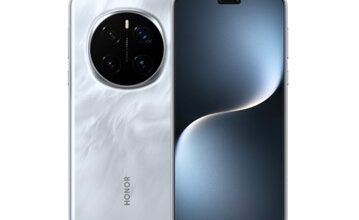The Key Elements of a High-Converting Landing Page

Creating a landing page that excels in converting visitors into paying customers is both an art and a science. An effective landing page is a goal for every business with an online presence.
A high-converting landing page takes no time to capture the visitor’s attention. It communicates the value proposition in a clear manner, and does not overwhelm the customer.
There are certain key elements that influence user behavior, and it is crucial to optimize them for businesses.
We look at a few of the elements that come into focus here.
A Compelling Headline
A headline is the initial focus of the visitors, it is the first impression, as soon as they land on the page.
If they don’t find the initial headline good enough, they can leave the website right away, something known as the bounce rate. Websites have to be able to grab a visitor’s attention, or it can significantly increase this metric.
A reasonable bounce rate is considered to be between 20 to 45 percent for ecommerce websites.
Clear Subheadings and Call To Action(CTA)
A subheading needs to reinforce the message that is conveyed in the main headline, providing additional details without too much verbiage. It should not be forced, and needs to flow naturally from the headline, providing further clarification.
A call-to-action(CTA) is the most important element of any high-converting landing page.
An ideal CTA tells the visitor exactly what is to be done. It can be a product or service to be bought, signup required for a free newsletter, or a download link for a giveaway. The idea is to make it specific and action-oriented.
An effective CTA has to portray a benefit or a value proposition. A bland ‘Know More’ doesn’t work.
The CTA button should have an easy-to-spot, contrasting color, making it stand out. Good websites have the CTA visible during the scroll so the potential buyer does not have to scroll up to locate it.
Effective Visual Media
Videos and images help with engagement in a way that text cannot do. Visuals should be relevant and self-explanatory.
The images should have a human element, like a person who is enjoying the product or service. Adding a human element through the images or short videos also creates an emotional connection with the visitor.
Also, the visual elements should not distract from the main message of the website text.
Social Proof and Testimonials
It’s a good idea to include customer or client testimonials, case studies and reviews on your website. This helps in building trust and credibility.
When potential customers witness social proof, in which there are other satisfied customers whom they find relatable, they are more likely to get converted.
Even quotes from satisfied customers or logos from well-known companies with whom you are associated can have a positive impact on the visitor.
Showcasing metrics like the number of customers, or ratings given by customers also works. According to Hocoos, AI builders let you quickly add these, using various AI tools for images and other elements.
A Simple, Distraction-Free Layout
Removing clutter is always good, and the same also applies to a website.
Limit the number of words on your website. Cramming too many of them will tire the visitor. Also, ensure there are a limited number of links, pop-ups, and navigational elements.
These distracting elements can confuse the visitor, who then may not click on the call to action button.
Use whitespace more, and give your website content some room to breathe. This also makes the page easier to load.
Page Speed and User Conversion
The speed of the page is a key performance indicator, as it is directly related to conversion.
When the website loads in an instant, the user experiences a certain delight and then goes on exploring it further. A slow website is bound to frustrate users, who will find it inconvenient to wait for the page to load.
A high bounce rate sends a negative signal to the search engines, which can affect the website’s rankings, too.
In order to enhance the speed of the landing page, do the following:
- Optimize all the images using compressed formats like WebP and JPG, reducing the file sizes without compromising on quality.
- Use vector graphics on the website.
- Enable browser caching so that the website does not have to download site elements repeatedly.
- To distribute content across multiple servers, use a content delivery network(CDN).
These measures will make your landing page load faster, helping you keep your visitors longer and turn them into paying customers.
You need to follow the above strategies for maximum conversions. The e-commerce world is super competitive, and these tips help you navigate it better.




